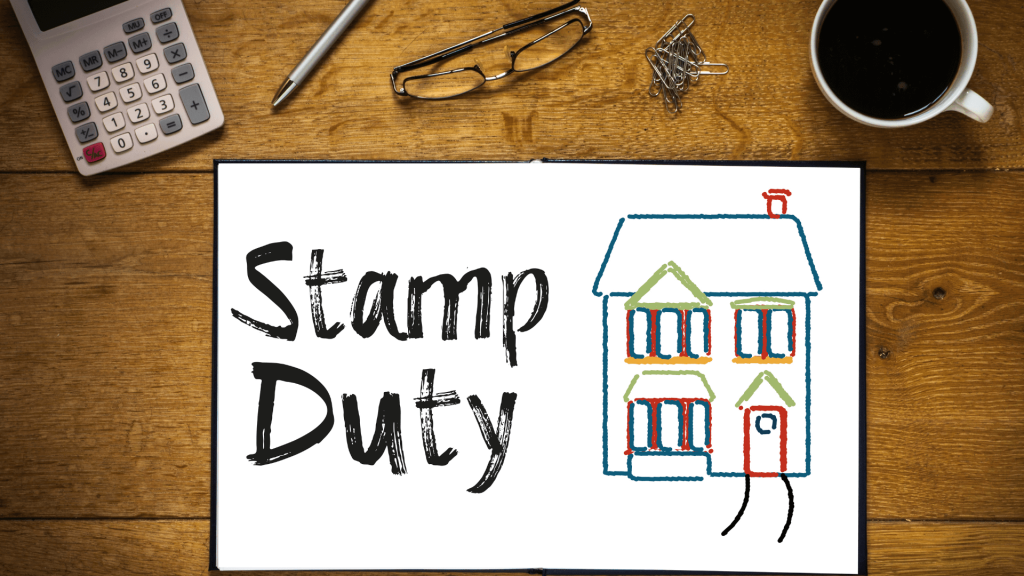Table of Contents
- What is Stamp Duty Land Tax (SDLT)?
- How is Stamp Duty Land Tax Calculated?
- The Impact of Purchase Price on SDLT
- Exemptions and Reliefs
- Higher Rates for Additional Properties
- SDLT for Non-UK Residents
- Stamp Duty for Corporate Bodies
- SDLT and Shared Ownership Schemes
- The Role of SDLT in Property Investment
- Claiming a Refund on Stamp Duty
- Changes to SDLT Over Time
- The Importance of Professional Advice
- Final Thoughts
Welcome to our comprehensive guide on Stamp Duty Land Tax (SDLT) in the United Kingdom. Whether you’re a first-time homebuyer, an experienced investor, or simply curious about the intricacies of property transactions in the UK, this guide will demystify SDLT and equip you with the knowledge you need to make informed decisions.
What is Stamp Duty Land Tax (SDLT)?
At the core of every property transaction in England and Northern Ireland lies Stamp Duty Land Tax, commonly referred to as SDLT. Simply put, SDLT is a tax imposed by the UK government on property or land purchases in these regions. It applies to both freehold and leasehold properties, whether you’re buying outright or securing a mortgage. The amount of SDLT you pay depends on the value of the property or land you are acquiring.
In Scotland, a comparable tax called Land and Buildings Transaction Tax (LBTT) applies, while in Wales, it’s known as Land Transaction Tax (LTT). The specifics of these devolved taxes are beyond the scope of this guide, which focuses on England and Northern Ireland.
How is Stamp Duty Land Tax Calculated?
Understanding how SDLT is calculated is essential for prospective homebuyers and investors alike. SDLT operates within a tiered system, somewhat akin to income tax. Each tier, or band, has a specific tax rate that applies to the portion of the property price within that band. These bands are periodically adjusted by the UK government. As of June 2023, the SDLT bands are as follows:
| Property Price | SDLT Rate |
|---|---|
| Up to £125,000 | 0% |
| Over £125,000 to £250,000 | 2% |
| Over £250,000 to £925,000 | 5% |
| Over £925,000 to £1.5 million | 10% |
| Over £1.5 million | 12% |
Stamp Duty Bands Source: HM Revenue and Customs (HMRC)
For instance, if you buy a house worth £300,000, the SDLT calculation would be as follows:
0% on the first £125,000 = £0
2% on the next £125,000 = £2,500
5% on the final £50,000 = £2,500
The total SDLT payable would amount to £5,000.
The Impact of Purchase Price on SDLT
Your property’s purchase price plays a significant role in determining your SDLT obligation. As we’ve established, SDLT operates within a tiered system based on property value. The more expensive the property, the higher the SDLT amount. However, it’s crucial to grasp that these rates apply progressively. In other words, you only pay the specified rate on the portion of the property price that falls within a particular band. For example, when buying a property worth £300,000, you don’t pay a flat 5% rate on the entire amount. Instead, you pay no tax on the first £125,000, 2% on the next £125,000, and 5% on the remaining £50,000. This tiered approach ensures that the tax is proportional to the property price, promoting fairness in the system.
This tiered system underscores the importance of accurately determining your property’s purchase price. Slight variations can lead to significant differences in the SDLT amount. For instance, a house costing £250,001 would incur more tax than one valued at £250,000 due to crossing into the 5% tax band for the £1 over £250,000. Therefore, factoring in SDLT when negotiating property prices or planning your budget is crucial.
You can use this convenient tool, the stamp duty calculator, to help you swiftly determine your expected SDLT based on the property’s purchase price. By entering the price, you can receive an estimate of your tax obligation. This tool empowers you to gain a clearer understanding of the total cost of acquiring a particular property, enabling you to plan your finances effectively.
Exemptions and Reliefs
While SDLT applies to most property transactions, certain exemptions and reliefs exist. These exceptions depend on factors such as the nature of the property, the buyer’s status, or specific purchase conditions. Here are a few notable exemptions and reliefs:
- First-Time Buyers Relief: This relief benefits first-time homebuyers purchasing a property valued under £500,000. They pay no tax on the first £300,000 and 5% on the portion from £300,000 to £500,000.
- Multiple Dwellings Relief (MDR): MDR is advantageous when acquiring multiple dwellings, such as a block of flats. It calculates SDLT based on the mean value of the dwellings, rather than their total combined cost.
- Transfer of Property in Separation or Divorce: Transferring a share of your home’s value to a former partner during separation or divorce does not attract SDLT. However, this area is complex and may require professional advice.
Several other reliefs, such as those for registered social landlords and properties in disadvantaged areas, also exist. To make the most of these reliefs, consulting with a property solicitor or tax expert is often necessary.
Higher Rates for Additional Properties
If you’re purchasing an additional residential property for £40,000 or more, such as a second home or buy-to-let investment, higher rates of SDLT apply. You’ll need to pay an additional 3% on top of the standard rates. However, there’s an opportunity to apply for a refund of the higher SDLT rate portion if you sell your main residence within 36 months.
Notably, certain property types, regardless of their value, are exempt from SDLT. These include caravans, mobile homes, and houseboats. If you’re considering purchasing one of these alternative residences, you can rest assured that SDLT will not factor into your budget, making them more affordable options in the housing market.
SDLT for Non-UK Residents
Starting from April 2021, non-UK residents purchasing residential property in England or Northern Ireland are subject to a 2% surcharge in addition to the standard rates. This measure aims to control house price inflation and support UK residents, particularly first-time buyers, in their quest to enter the property market. The surcharge applies to both individuals and certain “non-natural persons,” such as companies, partnerships, and trusts. In the case of joint purchasers, if any of the buyers are non-UK residents, the surcharge may apply.
The definition of a non-UK resident for SDLT purposes is someone who spent fewer than 183 days in the UK in the 12 months before the transaction. It’s worth noting that if a non-UK resident buyer subsequently spends 183 days or more in the UK after the purchase, they may be eligible to apply for a refund of the 2% surcharge. Navigating the tax landscape as a non-UK resident can be intricate, and it is highly recommended to seek advice from a property solicitor or tax expert to fully comprehend the implications of SDLT on your property purchase.
Stamp Duty for Corporate Bodies
Corporate bodies, including companies, partnerships with a corporate member, and collective investment schemes, are typically required to pay a 15% stamp duty on residential properties valued over £500,000. However, there are specific exceptions to this rule. For example, property rental businesses, property developers and traders, and businesses running large-scale commercial enterprises with a property rental component can potentially avoid the 15% flat rate.
SDLT and Shared Ownership Schemes
Shared ownership properties and schemes are a popular means of entering the UK’s housing market, especially for first-time buyers. These arrangements enable individuals to purchase a share of a property, typically ranging from 25% to 75%, and pay rent on the remaining portion, often owned by a local housing association. It’s important to note that SDLT rules for shared ownership have evolved. Until 2018, buyers of shared ownership properties could choose between paying SDLT in stages or making a one-time payment based on the total property value, even if they acquired only a portion of it. However, the rules changed in the 2018 budget, allowing shared ownership buyers to decide whether to make a one-off payment based on the property’s total value or pay SDLT in stages.
The Role of SDLT in Property Investment
For property investors, understanding SDLT is crucial in assessing potential return on investment. SDLT can significantly increase the cost of acquiring a property, thus shaping an investor’s purchasing strategy. In recent years, the UK government has taken steps to temper the buy-to-let market and level the playing field for first-time buyers.
Consequently, individuals and limited companies acquiring additional properties may face a 3% surcharge on top of the standard SDLT rates. These changes underscore the importance of tax planning as an integral aspect of a property investment strategy.
Claiming a Refund on Stamp Duty
If you have paid the higher rates of SDLT for additional properties but subsequently sell your previous main residence within three years, you have the option to apply for a refund from HM Revenue & Customs (HMRC). It’s essential to note that the claim for a refund must be submitted within three months of selling the previous main residence or within 12 months of the filing date of the SDLT return, whichever occurs later.
Changes to SDLT Over Time
SDLT rates have undergone various changes in recent years, responding to shifts in the property market and broader economic factors. Notably, there was a temporary reduction in SDLT rates during the COVID-19 pandemic. From July 2020 to September 2021, the UK government increased the SDLT threshold to £500,000 for property sales in England and Northern Ireland. This measure aimed to stimulate the property market during the economic downturn.
The Importance of Professional Advice
While this guide provides a comprehensive overview of Stamp Duty Land Tax, it is imperative to seek professional advice tailored to your specific circumstances when engaging in property transactions. SDLT can constitute a substantial expense, and understanding its intricacies can have a significant financial impact. Property solicitors, tax advisers, and estate agents well-versed in the UK property market can provide invaluable assistance.
Final Thoughts
As a prospective homebuyer or property investor in the UK, comprehending SDLT is key to budgeting accurately for your property purchase or investment. Although it may initially appear complex, breaking it down into its components makes it much easier to grasp. Always remember, when it comes to property transactions, an informed buyer or investor is more likely to achieve success.













